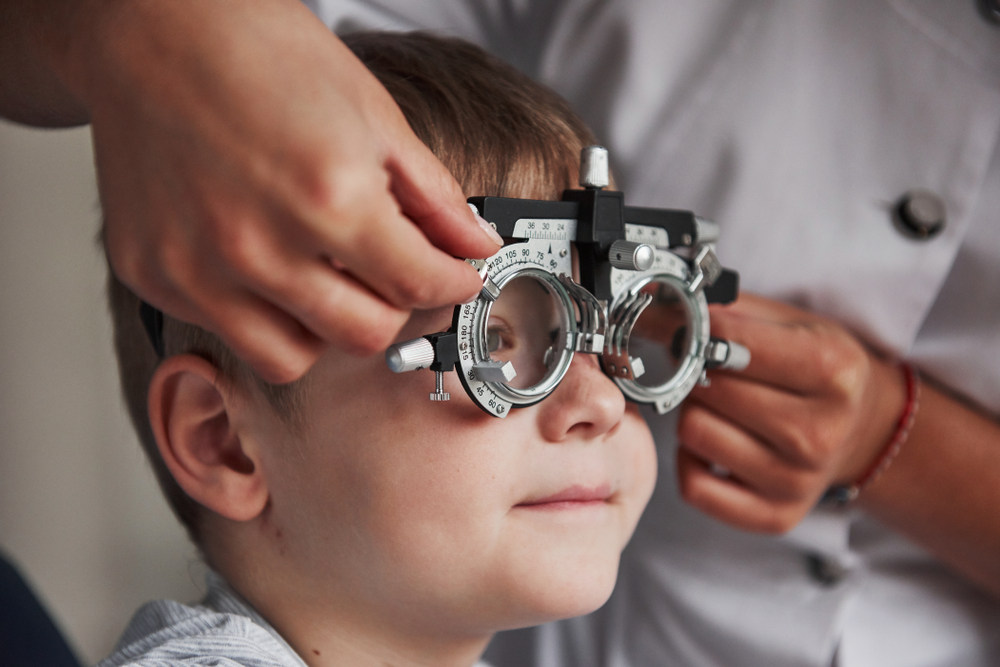
Clear vision plays an important role in a child’s growth, learning, and development. Many children cannot describe poor vision. They think how they see is normal. This makes early eye exams vital.
Children rely on their eyes to explore the world. They use sight to read, play, and connect with others. If vision problems go unnoticed, they may fall behind. Early detection helps prevent this from happening.
Why Early Detection Makes a Difference
Spotting vision problems early can change a child’s future. Quick action means easier treatment. Early exams matter for the following reasons:
Improved learning. Vision plays a huge role in classroom success. Children need to see clearly to read, write, and focus. If they struggle to see the board or follow words in a book, they may fall behind. Poor vision often appears to be a result of poor attention or a lack of effort.
Better behavior and focus. Unseen vision problems can impact a child’s behavior. They may seem distracted or frustrated. They might avoid reading or homework. This can be mistaken for a behavior issue. Once the vision problem is fixed, many children become more relaxed and better able to concentrate.
Healthy eye development. Children’s eyes continue to grow and develop as they age. Some issues, such as amblyopia or misalignment, can affect how the two eyes work together. If caught early, these problems can be corrected with glasses, patches, or therapy. When not treated, they may cause one eye to weaken over time.
Reduced strain and headaches. Children may not say their eyes hurt, but they might rub them often or complain of headaches. These signs are easy to miss. Eye strain from uncorrected vision can cause discomfort during reading, writing, or screen time. Early exams help identify these issues before they worsen.
Stronger hand-eye coordination. Clear vision supports physical movement, balance, and depth perception. Children who have difficulty seeing may struggle with sports, such as catching balls or climbing safely. They might become less active or feel left out of play. Early detection enables children to move with greater confidence.
What Do Eye Exams Check for?
A full eye exam checks more than just sharpness. It includes many parts of vision. The doctor will look at how the eyes move and work together. They also check depth, color, and peripheral vision.
Kids may have conditions like:
Amblyopia (lazy eye) — Where one eye does not develop well. It is easier to treat early.
Strabismus (eye misalignment) — This causes one eye to drift. Early care helps prevent double vision or depth issues.
Refractive errors — These include nearsightedness, farsightedness, and astigmatism. Glasses or lenses can help correct them.
Convergence issues — When eyes do not work well up close, reading becomes hard. Early therapy may help.
When Should Children Get Eye Exams?
Doctors recommend the first eye check by age one. If everything appears normal, the next visit should be scheduled for age three. Before starting school, a full eye exam is key. After that, exams should happen every one to two years.
Some children need more frequent visits. This includes those with a family history of eye problems. Children with special needs may also require more intensive care. Teachers and parents should watch for signs of vision trouble.
For more on pediatric eye exams, visit Brixton Eye Clinic. Our office is in Oklahoma City, Oklahoma. Call (405) 450-8700 today to schedule an appointment.
https://www.allaboutvision.com/eye-care/eye-exam/children/
https://www.cdc.gov/vision-health/about-eye-disorders/why-eye-exams-are-important.html




